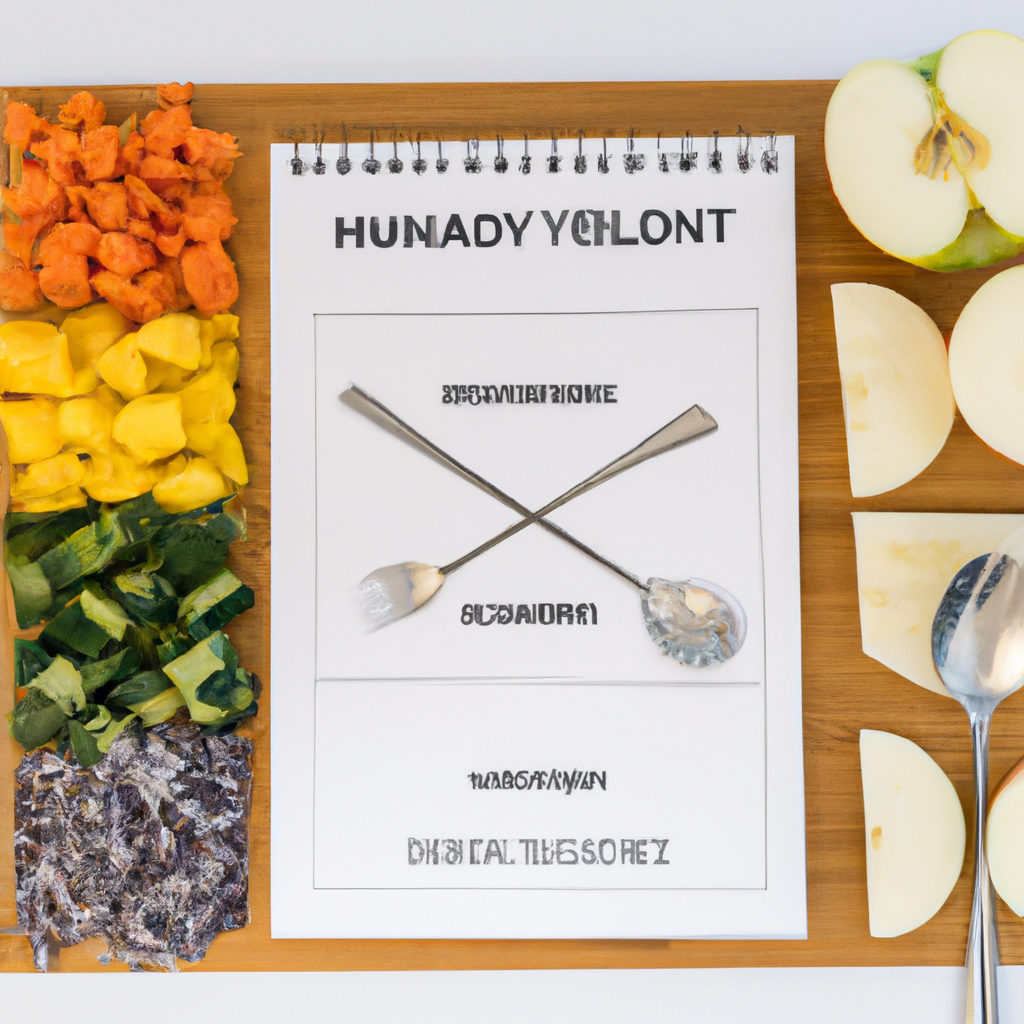Achieving nutritional harmony in your daily life can seem like a daunting task. With all the advice out there about what constitutes a balanced meal, it can seem like an impossible mission- but it doesn’t have to be! With a few easy tips and tricks, you can make sure that every meal you eat is full of essential nutrients and balanced out just right! In our article today, we’ll discuss what it takes to make balanced meals a regular part of your day.
1. Striking a Balance – Eating for Nutritional Harmony
Sometimes, striking a balance when it comes to eating the right kind of foods can be a challenge. But if you take the time to learn which foods are essential and essential nutrients they provide, you can start to master the art of creating nutritional harmony in your meals.
- Carbohydrates: Carbohydrates provide energy and fuel your body. They come in different forms including starches, sugar, and fiber. Focus on whole grains and legumes for satiety.
- Protein: Protein helps support cell health and production of hormones and enzymes. It helps build muscle and can speed up metabolism. Lean animal proteins, nuts, and legumes are all excellent sources.
- Fat: Fat provides essential fatty acids and helps the body absorb vitamins A, D, E, and K. Healthy fats can be found in fatty fish, nuts, avocado, and olive oil.
- Vitamins and Minerals: These dietary components are essential for energy production, wound healing, stronger bones, and healthy cell function. Choose foods packed with vitamin C, iron, magnesium, and calcium. Fruits and veggies are great sources.
By incorporating a combination of these elements into your balanced diet, you can create a meal plan that will help you stay nourished and energized while still enjoying your favorite foods. When choosing portion sizes, aim to fill half of your plate with fruits and/or vegetables, a quarter with protein and the other quarter with carbohydrates.
It is also key to be mindful of what is in and around your plate, such as added salt, sugars and fats. Since sodium can be found in so many processed foods, be especially conscious of how much salt you are consuming. Similarly, synthetic as well as natural sugars tend to be in processed food products, so read nutrition labels closely.
It’s all too easy to succumb to unhealthy eating habits like skipping meals or chowing down on oversized portions of calorie-laden goodies. Instead, plan ahead and make meals you can look forward to and that provide nutritional harmony.
2. Constructing a Balanced Plate with Healthy Choices
Ready to learn how to create your own balanced plate filled with healthy food? Let’s break it down!
Half portion of colorful vegetables: Focus on adding vegetables to your plate in order to get the most nutrition bang for your buck. Incorporate various colors of vegetables into your diet for the most nutrition benefits. Think red peppers, yellow squash, pop of green from spinach or Brussels sprouts, and bright purple from eggplant. Get creative with salads, stir-fries, roasted veg, or any other flavorful way you can think to enjoy vegetables.
Quarter portion of lean protein: A protein-rich meal is essential for your health. Try to include a source of lean protein such as poultry, fish, seafood, tofu, legumes, nuts or eggs. Protein will help to keep you feeling full and energized, in addition to building healthy muscle.
Quarter portion of whole grains: It’s important to include complex carbohydrates in respect to balance out the meal. Whole grains help to provide energy and fiber to the body, as well as vitamins, minerals, and antioxidants. Quinoa, brown rice, oats, barley, farro, and buckwheat are wonderful options.
Plenty of healthy fats: Healthy fats are an essential part of a balanced plate. Fats can help to keep us full longer, balance our hormones, provide essential fatty acids, and aid in better absorption of fat-soluble vitamins. Think of avocado, nuts, seeds, olive oil, and nut and seed butters.
Bonus toppings: Add a little pizzaz to your plate by topping with your favorite additions. Consider adding:
- A sprinkle of fresh herbs
- A shake of nutritional yeast
- A squeeze of citrus
- Dollop of hummus or tahini dressing
Now you have the tools to build your own healthy, balanced plate. Enjoy!
3. Satisfy Your Appetite with Nutritious Foods
If you want to keep your body healthy and stay fit, you’ll need to make sure your diet is filled with nutritious meals. Allowing yourself to indulge in treats is important too, but having a healthy diet is the best way to ensure that you have the energy and strength you need to stay fit and active. Here are a few delicious and nutritious foods you can incorporate into your meals to make sure your body is receiving all the essential vitamins and minerals it needs.
- Fruits & Veggies: Not only are they packed with essential vitamins and minerals, but they’re also full of fiber to help keep you feeling full and satisfied. Try getting a variety of different colors in your fruits and veggies, as each color is associated with a different nutrient.
- Whole Grains: Whole grains are loaded with vitamins, minerals and fiber, as well as healthy fats. They’re a great source of complex carbs, which break down slowly and provide sustained energy throughout the day.
- Nuts & Seeds: If you need a little boost of energy, then nuts and seeds are your best bet. They contain essential fatty acids and are packed with protein and minerals. They’re an excellent addition to any meal or snack.
- Oily Fish: Oily fish is rich in Omega-3s which are great for your heart health. Additionally, they’re also a great source of protein and minerals. Salmon and mackerel are some great options!
These four foods form a good foundation for a nutritious diet, but there are plenty of other options to consider. Are you a fan of red meat? Lean cuts are a great way to get some protein and essential minerals. Or why not go for some legumes? Often overlooked, they’re full of fiber, protein and vitamins. They make for a great addition to any meal or as a delicious mid-afternoon snack.
No matter what foods you choose, it’s always important to keep your portion sizes under control so that you don’t overdo it. Eating too much of anything can be damaging to your body, so practice mindful eating and enjoy your meals with moderation. That way, you’ll be sure to that will keep your body looking and feeling healthy.
4. Achieving Nutritional Balance with Everyday Meals
Proper nutrition is essential to leading a healthy lifestyle, but it can sometimes to be difficult to achieve nutritional balance in our everyday meals. However, it is not impossible! Here are some tips to help you get the most out of your meals:
- Make sure you are eating a balanced diet – a wide variety of foods across all the main food groups. This will provide you with a range of essential nutrients. For example, include lean protein in most meals, such as fish, chicken or lean beef.
- Choose whole grain options when possible. This means avoiding refined carbs and eating things like brown rice, whole wheat bread, and quinoa.
- Add in plenty of fresh vegetables into your diet. They are an invaluable source of vitamins, minerals, and fibre.
- Include a source of healthy fats – olive oil, avocados, nuts and seeds. Healthy fats provide essential fatty acids, as well as help to improve satiety.
- Include herbs and spices in your meals. Not only do they add flavour, but they also contain high levels of antioxidants and other beneficial compounds.
Achieving nutritional balance in everyday meals isn’t as difficult as you may think. Just make sure you are eating a variety of foods across all the main food groups and you can get the most out of your meals.
No matter what you decide to eat, every meal should be an intentional experience. A balanced meal can provide your body and mind with an incredible array of nutrients, offering a reliable source of energy and nourishment. As you strive to reach the perfect harmony between nutrition and flavor, you’ll discover that healthy eating can be a fulfilling and enjoyable endeavor. Enjoy the journey to nutritional harmony!



